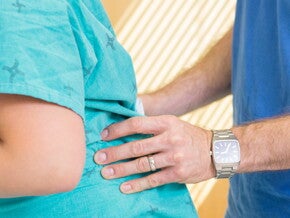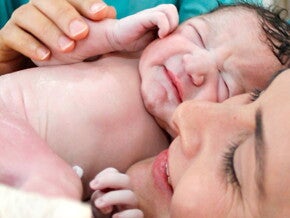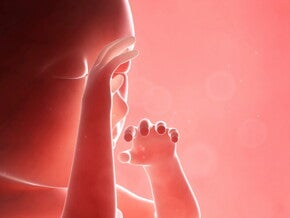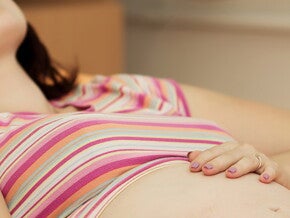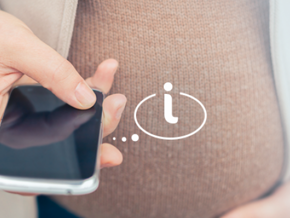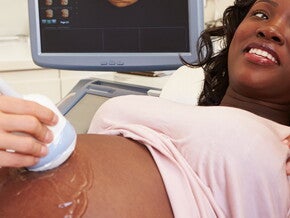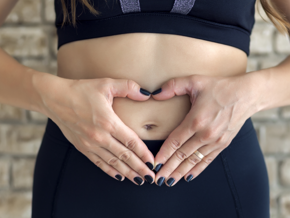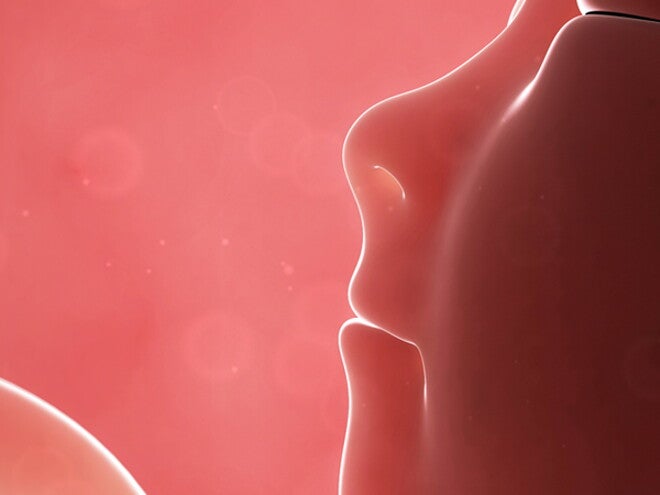
Sex in pregnancy
- Conventional positions may become uncomfortable due to your enlarged abdomen.
- Experiment with different positions and alternative means of satisfaction.
- Emotional factors such as decreased body image and sense of desirability can lead to less frequent intercourse.
Condoms
If you are worried that you or your partner may have HIV or another sexually transmitted disease, it is very important to use condoms during pregnancy to avoid infecting each other.
Baby
The third trimester is from the seventh to the ninth month and is known as the finishing period for the baby. A baby born during this period can survive, although the chances for both survival and transition to independent life improve as the baby nears the due date.
Week 28: Your baby weighs around 1 kg, including insulating fat, and is about 37 cm long. Her head is almost in proportion to her body. During the eighth month your baby gains at least a kilogram of mostly insulating fat and is about 47 cm long.
Weeks 36–40: Your baby will prepare for her descent into the pelvis. Most babies turn upside down and lodge their head low in the pelvis, firmly against the pelvic floor
muscles, ready to be born. She is now approximately 50 cm in length and on average weighs 3,2 kg. During the last few weeks, her organs continue to mature to
prepare for life outside the uterus.
Mother
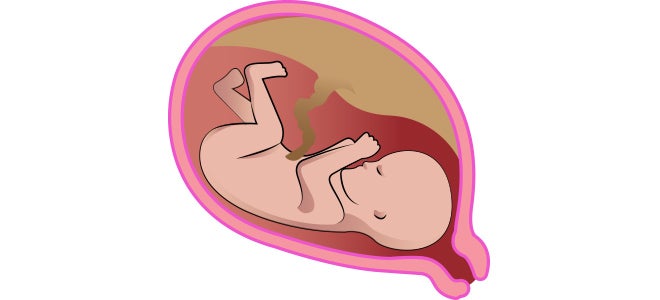
At this stage you may experience:
- Shortness of breath as your uterus presses upwards on your diaphragm and ribs.
- Varicose veins in your legs, vulva and rectum (haemorrhoids).
Swollen feet and ankles are due to increased pressure within your abdomen and decreased blood return from your lower limbs, as well as the effect of progesterone relaxing the walls of the blood vessels.
Stretch marks
Stretch marks may develop on your abdomen, thighs and breasts. Between 75% and 90% of women develop stretch marks during pregnancy. They usually appear as thin, red lines on your stomach in the 6th or 7th month, but some women also get stretch marks on their thighs, buttocks and breasts. Although they are reddish during pregnancy, they usually fade and become white lines after birth.
While there is nothing you can do that will guarantee the prevention of stretch marks, drinking plenty of water, eating a healthy diet and massaging a rich moisturiser or special anti-stretch mark cream into your skin daily, are a few steps that may help reduce them.
Backache
Backache may be caused by the weight of the baby and the uterus pulling forward.
Many women often suffer from backache during pregnancy, although this back pain may be completely new or an exacerbation of a pre-existing condition. The cause of the pain can be due to many different factors, but is usually related to strain to the joints, muscles and ligaments around the lumbar spine and pelvis, as a result of a change to the shape of the female body. The pelvis is similar to a bucket, and during pregnancy not only does the weight within the bucket increase, but also having this increase at the front of the bucket causes it to tilt forward.
This increases the lordsis (the curve at the lower back) and therefore can compress the joints at the bottom of the spine where it meets the pelvis.
Further to these changes, as the pregnancy progresses your body prepares itself for giving birth. The ligaments around the pelvis loosen to allow the baby to be born. This relaxation in the ligaments, and a weakening of the core muscles in the spine if you become less active, reduces back stability, putting your back at risk for more strain and pain.
This all said, many women have a pain-free pregnancy, and those that do suffer can often gain excellent relief from strengthening exercises and manual therapy techniques. If you are pregnant and suffering from back pain, then seeing a physiotherapist or preferably a specialised women’s health physiotherapist is recommended to provide you with specific diagnosis, appropriate advice, and an individual treatment plan.
Other tips for relieving back pain include:
- Posture. Maintaining good posture by getting a good chair with proper back support or tucking a pillow behind your lower back. For details on postural correction exercises, click here.
- Gentle exercise. Rest can cause your back to tighten, so gentle exercise is a good way to keep your back moving.
- Flat shoes. You can reduce strain on your back by wearing flat shoes with a cushioned sole.
- You can lessen tension by trying to avoid stress and anxiety.
Rest and sleep.
It is normal to struggle to get to sleep when you are pregnant. As the third trimester progresses and your bump gets bigger, you may find it harder to get comfortable. If you are not sleeping well, try not to let it bother you, as it will not harm your baby. Some tips for sleeping better include:
- Do some gentle exercise during the day.
- A rest during the day can also help you feel less tired.
- Rather than watching television, spend the last hour before bed reading a book, listening to some restful music or taking a long soak in a warm bath.
- Lie on your side and put extra pillows behind your back, under your bump and between your knees.
By this stage of your pregnancy you will be looking forward to its end, relief from the physical discomforts, and the long awaited joy of holding your baby!
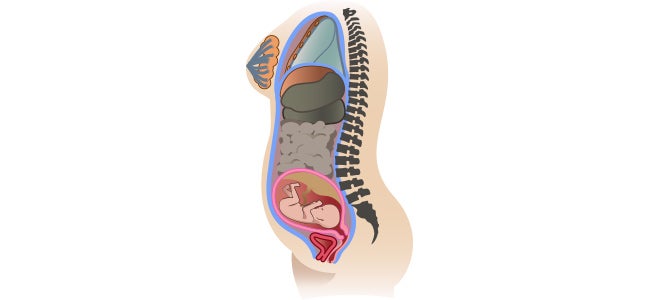
| Gestation | Visits, tests, observations | Performed by |
| 28 weeks | Fortnightly visits are done from 28–36 weeks of pregnancy. |
All caregivers |
| 30 weeks |
Routine observation. | All caregivers |
| 32 weeks |
Routine observation. | All caregivers |
| 34 weeks |
Routine observation. | All caregivers |
| 36 weeks | WEEKLY VISITS FROM 36 WEEKS UNTIL BIRTH Routine observation. |
All caregivers |
| 37 weeks until birth | A vaginal examination and pelvic assessment may be carried out by some caregivers to assess the size of the pelvis, usually at 38 weeks. Routine observation. |
Obstetrician Midwife |
Tips for expectant moms
- Begin childbirth education classes.
- Investigate support groups.
- Rest and relax as much as possible.
For any questions during your pregnancy journey make sure to attend childbirth education classes or consult childbirth associations. Contact the Unemployment Insurance Fund for information on maternity benefits.

